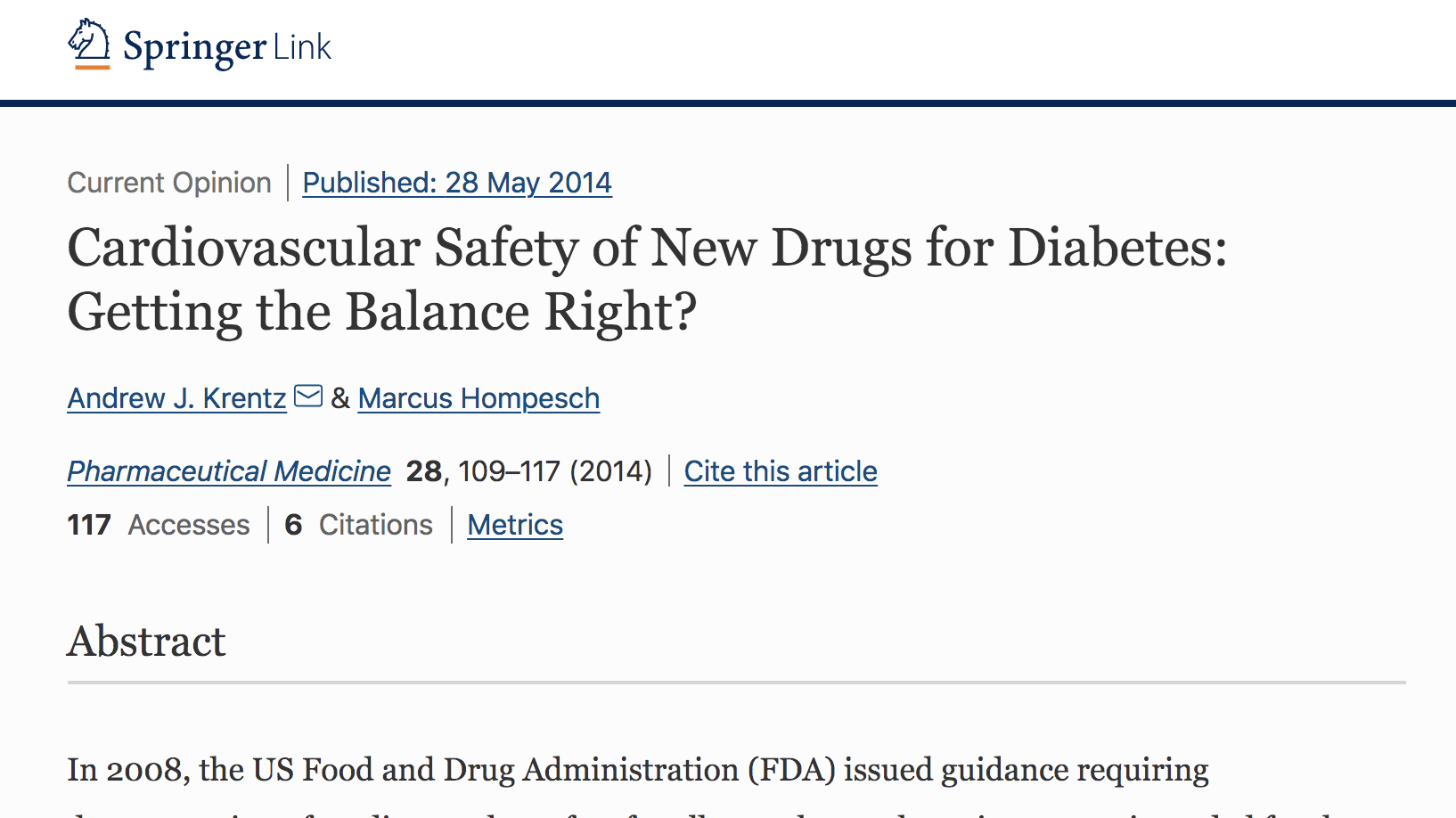About This Article
In 2008, the US Food and Drug Administration (FDA) issued guidance requiring demonstration of cardiovascular safety for all new glucose-lowering agents intended for the treatment of type 2 diabetes. The main driver for this move was the negative experience that the FDA had encountered with rosiglitazone. This widely prescribed thiazolidinedione had come under intense pressure with publication of an analysis suggesting an increased risk of myocardial infarction. The new FDA stringency stipulated the need for randomized controlled trials involving adequate numbers of participants over sufficiently long exposure and follow-up periods with adjudicated cardiovascular endpoints assessed against specific safety limits. It has been argued that these requirements are perhaps overzealous and run the risk of reducing innovation. Aspects of the pharmaceutical industry are perceived as being increasingly risk-averse within an increasingly competitive diabetes market. Set against these concerns is an opportunity to fill much-needed gaps in knowledge about the cardiovascular risks and benefits of glucose-lowering drugs, both old and new. Five years since the issuance of the FDA guidelines, we assess the operation of the current approval processes. We set the agency’s decision making in a broader context of other major regulatory bodies. Using recent data from trials of saxagliptin, alogliptin, and canagliflozin as examples, alongside the recently announced removal of the prescribing and dispensing restrictions for rosiglitazone, we consider whether the guidelines are functioning as intended.



